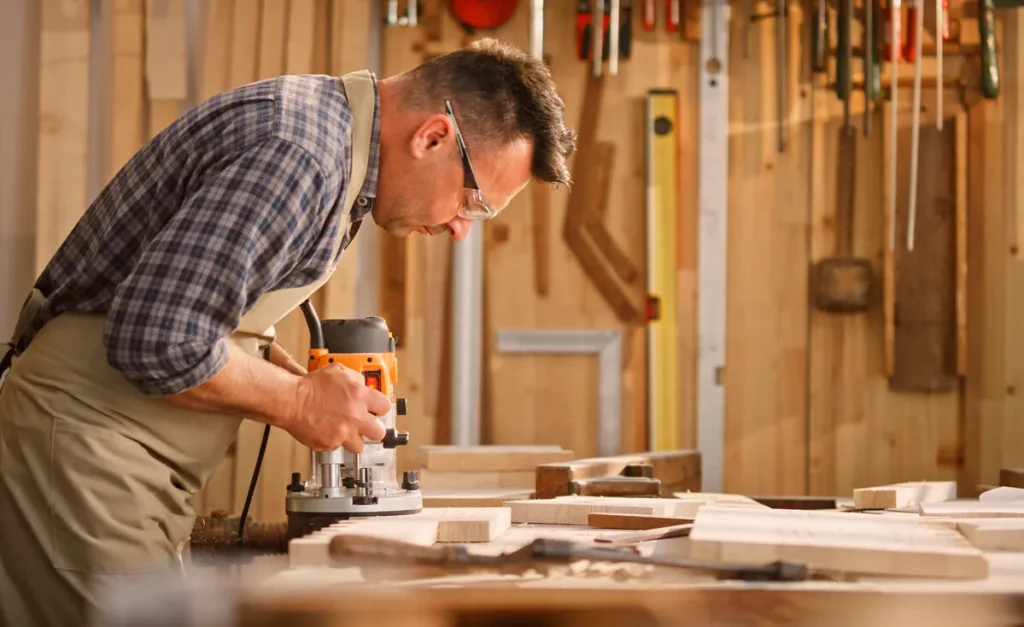Woodworking is more than just a hobby; it’s a craft that combines creativity, precision, and skill. Whether you’re a beginner or someone looking to elevate your projects, mastering woodworking techniques requires dedication, practice, and knowledge of the tools and materials involved. In this guide, we’ll explore the essential strategies and tips to help you take your woodworking skills to a professional level.
Understanding the Basics of Woodworking
Before diving into advanced techniques, it’s crucial to have a solid grasp of the fundamentals. woodworking is not just about cutting and assembling pieces of wood; it’s about understanding the properties of different wood types, mastering basic joinery, and learning how to handle various tools safely.
Start by familiarizing yourself with common wood types such as pine, oak, maple, and walnut. Each wood has unique characteristics, including grain patterns, hardness, and workability. Knowing which wood to choose for a project ensures durability and a professional finish.
Equally important is learning essential woodworking tools. Hand tools like chisels, planes, and saws provide precision, while power tools such as routers, table saws, and drills speed up the process. Understanding when and how to use these tools safely is foundational to mastering woodworking.
Essential Woodworking Techniques
To master woodworking like a pro, you need to focus on specific techniques that elevate the quality of your work. Here are some essential woodworking techniques to practice:
Cutting and Measuring
Precision is key in woodworking. Always measure twice and cut once to avoid mistakes. Use quality measuring tools like a combination square, tape measure, and marking gauge. Learning proper cutting techniques, whether with hand saws or power saws, ensures clean, straight edges that fit perfectly in your projects.
Joinery Techniques
Joinery is the heart of woodworking. A strong joint can make or break your project. Start with basic joints such as butt joints, miter joints, and lap joints. As you gain confidence, practice advanced joints like dovetail, box, and mortise-and-tenon joints. These techniques not only enhance the strength of your projects but also add a professional aesthetic.
Sanding and Smoothing
A smooth surface is vital for finishing your project. Sanding removes imperfections and prepares the wood for staining or painting. Begin with coarse sandpaper to remove rough areas and gradually move to finer grits for a polished finish. Proper sanding techniques prevent scratches and uneven surfaces, giving your project a professional look.
Finishing Techniques
Finishing is the final step that brings your woodworking project to life. Techniques such as staining, painting, and applying varnish or polyurethane protect the wood while enhancing its natural beauty. Learn how to apply finishes evenly and avoid drips or streaks. Experiment with different finishes to achieve the desired color, texture, and durability.
Advanced Woodworking Tips
Once you’re comfortable with basic techniques, it’s time to explore advanced tips to elevate your woodworking projects.
Mastering Tool Handling
Professional woodworkers have an intimate knowledge of their tools. Learn the correct grip, posture, and motion for each tool. For example, using a chisel requires controlled force and precise angles, while operating a router demands a steady hand and consistent speed. Regular practice improves your dexterity and reduces the risk of accidents.
Understanding Wood Behavior
Wood is a natural material that reacts to environmental changes. Understanding how wood expands, contracts, or warps under different conditions is essential for creating durable projects. Seasonal changes, humidity, and temperature can affect your pieces, so plan and adjust your techniques accordingly.
Project Planning and Design
Successful woodworking starts with a clear plan. Sketch your design, measure accurately, and create templates if needed. Planning helps avoid mistakes, saves time, and ensures each piece fits together perfectly. Using design software or traditional drawing techniques can help visualize your project before making the first cut.
Learning from Mistakes
Mistakes are inevitable in woodworking, but they are also valuable learning opportunities. Analyze what went wrong, whether it’s a miscut, weak joint, or uneven finish, and adjust your approach. Professional woodworkers refine their skills through trial and error, gaining knowledge that textbooks can’t provide.
Building Efficiency in Woodworking
Efficiency doesn’t mean rushing; it means working smart. Organize your workspace to reduce unnecessary movements, keep tools accessible, and maintain a clean environment. Batch similar tasks together, such as cutting all pieces before assembling, to save time and maintain focus.
Additionally, mastering woodworking techniques involves knowing how to maintain your tools. Sharp blades, clean chisels, and well-oiled machines not only perform better but also make your work safer and more precise.
Continuous Learning and Inspiration
Woodworking is an ever-evolving craft. Stay inspired by exploring new techniques, styles, and trends. Attend workshops, watch tutorials, or join woodworking communities to learn from experienced craftsmen. Reading books and magazines dedicated to woodworking can also introduce you to innovative methods and project ideas.
Experimentation is key. Trying new joinery styles, finishes, or tools helps you discover your unique approach. The more you explore, the closer you get to mastering woodworking like a professional.
Safety in Woodworking
Safety should never be overlooked. Always wear protective gear such as safety glasses, gloves, and hearing protection. Keep your workspace well-ventilated, especially when sanding or applying finishes. Understanding and following safety protocols reduces the risk of accidents and ensures a long, enjoyable woodworking journey.
Conclusion
Mastering woodworking techniques requires dedication, practice, and a willingness to learn. By understanding the basics, honing essential skills, exploring advanced tips, and prioritizing safety, you can elevate your craft to a professional level. Remember, woodworking is both an art and a science—it’s about precision, creativity, and continuous improvement.
Embrace challenges, learn from mistakes, and never stop exploring new techniques. With time, patience, and passion, you can master woodworking and create projects that are not only functional but also works of art.

